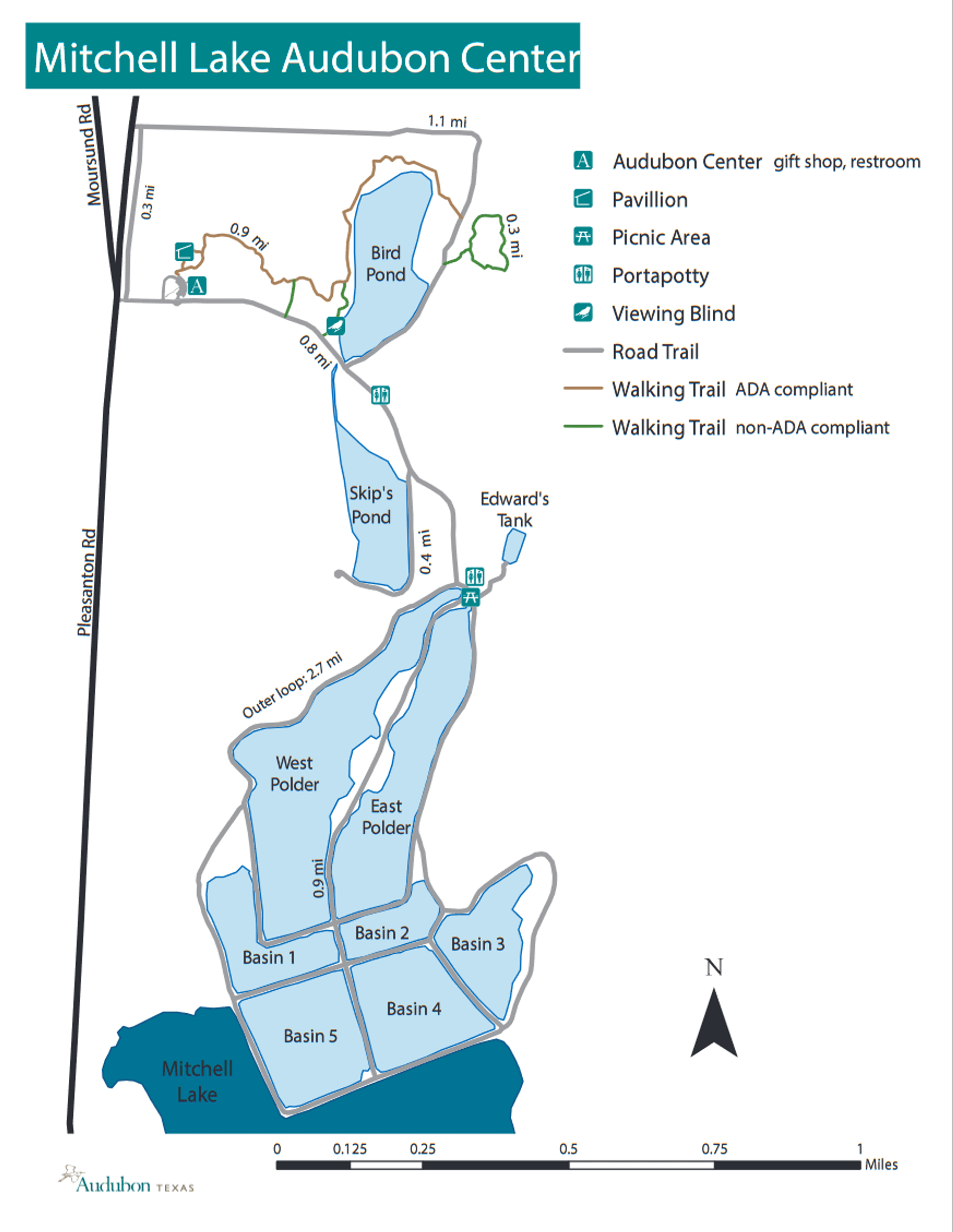Mitchell Lake Audubon Center (HOTE 103)
Mitchell Lake Audubon Center (HOTE 103)
San Antonio, Texas 78221
Official WebsiteMitchell Lake Audubon Center map
Tips for Birding
Mitchell Lake Audubon Center is a stop (HOTE 103) on the Heart of Texas East Wildlife Trail.
The Mitchell Lake Audubon Center is San Antonio's premier birding location. In addition to the lake and ponds, this site also provides brush land, grassland and mudflat habitats.
Birds of Interest
Common birds include Harris' and Red-tailed Hawks, Crested Caracara, Greater Roadrunner, Black-necked Stilt, Blue Grosbeak and Neotropic Cormorant. Migration brings several species of warblers, large numbers of ducks and a wide assortment of shorebirds. Cattle and Great Egrets, Little Blue and Green Herons and Yellow-crowned Night-Heron form a rookery on the northeast part of the lake. Groove-billed Ani has also nested here. Winter is an outstanding time to visit this site. Vermilion Flycatcher, Say's Phoebe, Cinnamon Teal, as well as numerous sparrows and ducks regularly winter at Mitchell Lake. Rare sightings are not restricted to any particular season; unusual birds often make an appearance, especially after severe weather. Past rare sightings include Magnificent Frigatebird, Ringed Kingfisher, Reddish Egret and Great Kiskadee. Least Grebe and Roseate Spoonbill are seen from time to time as well. Look for dragonflies such as Four-spotted Pennant and Eastern Pondhawk, and butterflies such as Bordered Patch, Buckeye, Variegated Fritillary and Pipevine Swallowtail.
About this Location
Mitchell Lake Audubon Center is a wildlife refuge designated by the City of San Antonio and located on the San Antonio Water System property. Once the sewage facility for the city, the lake is now exclusively for wildlife viewing and provides habitat. No fishing or recreational activities are allowed at the lake; it's for the birds!
This wetland habitat is one of the last critical stopover grounds before the Texas Coast, where 98.5% of long-distance migratory bird species in the US pass through, many of which are about to fly for hours or days over open ocean. Not only is this one of the best spots for birding in San Antonio, but the center also opens doors to more than 4,000 students annually for outdoor science and conservation education, which most students do not get in traditional schooling. So, come explore the habitat, walk our native gardens, take a class or a tour, volunteer, or give your support to our education and conservation programs.
Features
Restrooms on site
Wheelchair accessible trail
Entrance fee
Content from Official Website
Last updated September 7, 2023
